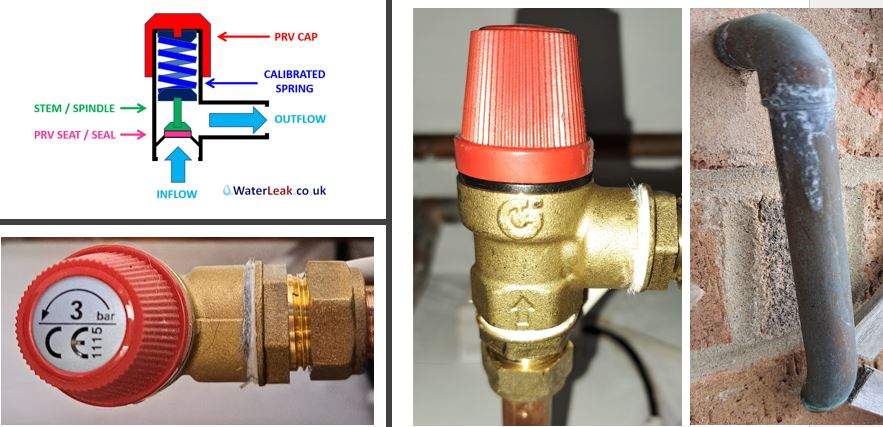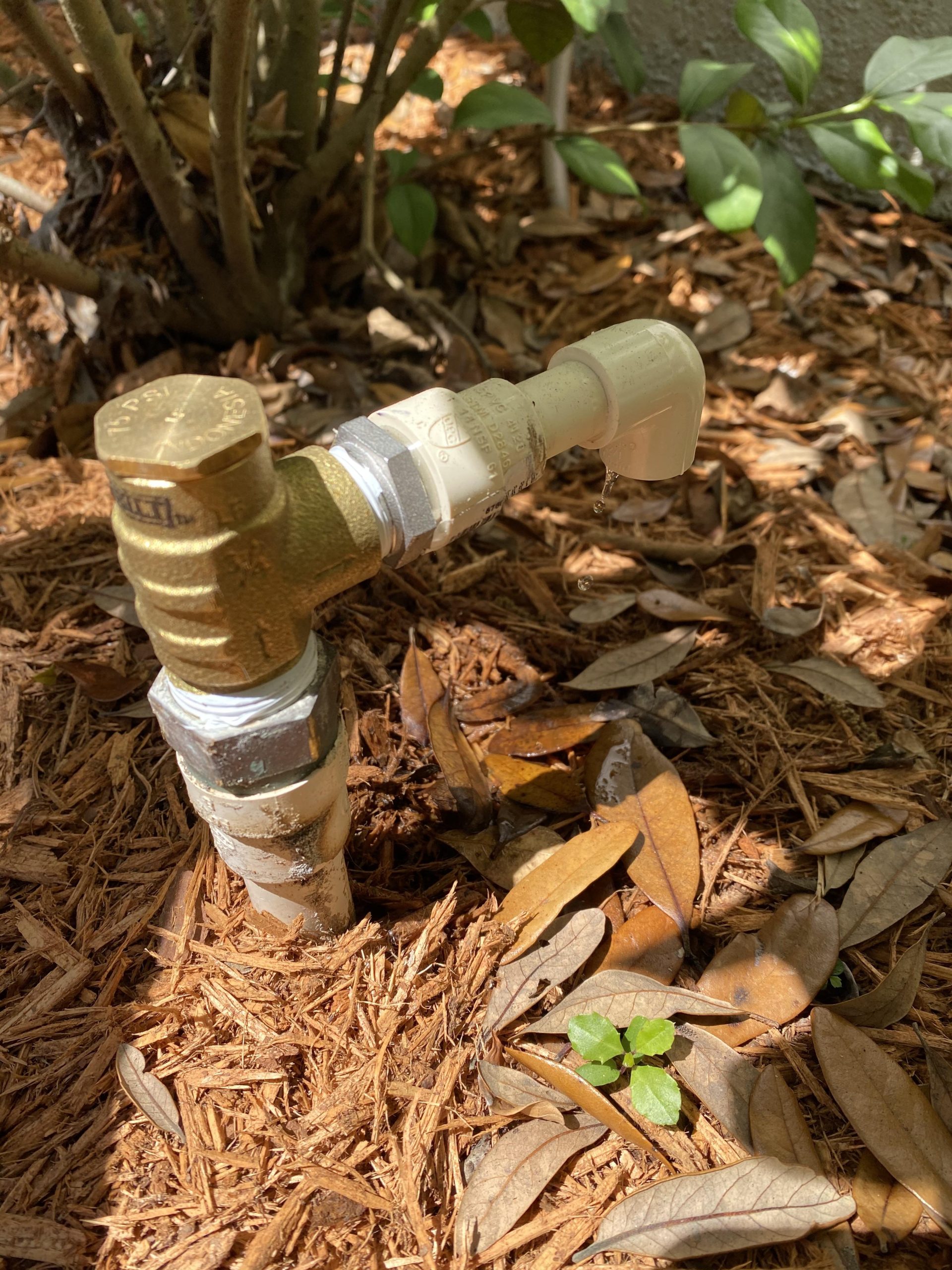If your pressure relief valve is leaking outside, it could be a sign of potential safety risks and system inefficiency. This issue can lead to decreased performance and damage to the surrounding area.
It is vital to address the problem promptly to prevent further complications. A leaking pressure relief valve can indicate excessive pressure within the system, improper installation, or a faulty valve. Ignoring this issue can result in safety hazards and costly repairs.
Regular maintenance and inspection of pressure relief valves are crucial to ensure optimal performance and safety. Understanding the causes and implications of a leaking pressure relief valve is essential for preventing potential dangers and maintaining the efficiency of your system. Addressing this issue promptly can save you from potential risks and expenses in the long run.
Identifying A Leak Outside
If you notice a leak outside your pressure relief valve, it could indicate a potential issue. Signs of a leak include water pooling around the valve or a constant drip. A leaking relief valve can be caused by excessive pressure in the system, a faulty valve, or a buildup of sediment. Immediate steps should be taken to prevent further damage. First, shut off the water supply to the heater to prevent additional water from escaping. Additionally, release the pressure from the relief valve to ascertain whether the leak stops. If the leaking persists, contacting a professional plumber is recommended to inspect and address the issue promptly.
Reasons Behind External Prv Leaks
Leaking of the pressure relief valve (PRV) from the exterior can occur due to various common reasons. These include issues such as insufficient maintenance, overpressurization, corrosion, and inadequate installation. Another crucial factor is the influence of environmental conditions, which can compromise the integrity of the PRV. Exposure to extreme temperatures, moisture, and corrosive elements can deteriorate the valve components, leading to leaks. To prevent outdoor PRV failures, it is essential to regularly inspect and maintain the valve, ensuring it operates within the specified pressure limits and is shielded from detrimental environmental factors.
Initial Assessment Steps
When inspecting your pressure relief valve (PRV), it’s important to start by ensuring your safety with the right tools and precautions. Firstly, make sure to turn off the power supply to the PRV and take note of any water or steam leakage outside the valve. Next, check for any blockages in the discharge pipe and confirm that it is unrestricted. Remember to wear appropriate protective gear such as gloves and safety goggles during this process to avoid any potential hazards. Lastly, take the time to visually inspect the PRV for any signs of damage or corrosion, which can indicate a potential issue. By following these steps, you can safely and effectively diagnose PRV problems.

Credit: waterleak.co.uk
Possible Fixes For Prv Leakage
When dealing with pressure relief valve leakage, it is important to consider short-term solutions to prevent water damage. One option is to clean the valve to remove any debris or blockages that may be causing the leakage. This can be a temporary fix to mitigate the issue until a more permanent solution can be implemented.
In some cases, cleaning the pressure relief valve may be sufficient to stop the leakage. However, if the valve continues to leak after cleaning, it may be necessary to replace the valve altogether. It is important to assess the extent of the damage and consult with a professional to determine whether cleaning or replacing the valve is the best course of action.
Hiring The Right Plumber For Outdoor Prv Leaks
If you’re dealing with a pressure relief valve leaking outside, it’s crucial to hire a professional plumber who can address the issue effectively. When selecting a plumber for outdoor PRV leaks, consider their experience with similar problems and their knowledge of outdoor plumbing systems. Look for a plumber who is licensed and insured, as this ensures they have the necessary qualifications and coverage. Additionally, inquire about the pricing structure and whether they provide warranty for their work.
When discussing PRV repair or replacement with a plumber, ask about their recommended solution and the pricing details associated with the repair or replacement. Inquire about the timeframe for completing the job and whether they offer any maintenance tips to prevent future leaks. By asking these questions and carefully evaluating the plumber’s expertise, you can make an informed decision for addressing outdoor PRV leaks.
Regular Prv Maintenance Tips
Regular maintenance of your pressure relief valve (PRV) is essential to prevent leaks and ensure its proper functioning. Performing routine check-ups on your PRV can help identify any potential issues before they escalate into major problems. Inspecting for corrosion, leaks, and wear and tear is crucial in maintaining the valve’s integrity. In addition, verifying the pressure settings and ensuring they are within the recommended range is important for the valve’s effectiveness. Implementing preventative practices, such as checking and replacing gaskets, can help to prolong the PRV’s lifespan and prevent leaks. Ultimately, prioritizing PRV maintenance can help you avoid costly repairs and potential environmental damage from leaks.
Frequently Asked Questions Of Pressure Relief Valve Leaking Outside
What Are The Common Causes Of A Pressure Relief Valve Leaking Outside?
A pressure relief valve leaking outside can be caused by high pressure, debris blockage, or a faulty valve seal. It’s crucial to address the issue promptly to prevent further damage to the system.
How Can I Troubleshoot A Pressure Relief Valve Leaking Outside?
Start by checking the pressure settings and inspecting the valve for any visible damage, such as corrosion or leaks. It’s also important to verify that the valve is installed correctly and functioning as intended.
When Should I Seek Professional Help For A Pressure Relief Valve Leaking Outside?
If troubleshooting the issue doesn’t resolve the leakage, or if you’re unsure about how to proceed, it’s best to consult a qualified technician. Continuing operation with a leaking valve may pose safety risks.
Conclusion
Dealing with a pressure relief valve leaking outside poses potential risks for your system’s efficiency and safety. Addressing this issue promptly is essential to prevent further damage and ensure smooth operations. For professional assistance, consult with experienced technicians and keep your systems and processes in top shape.

